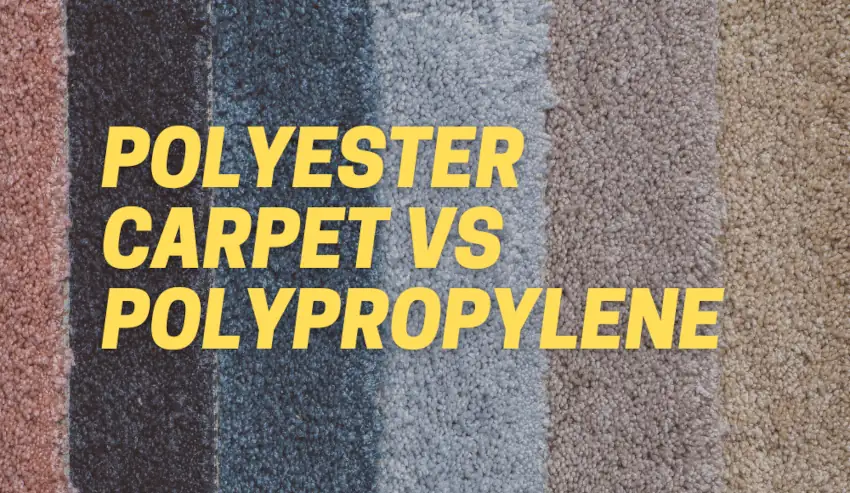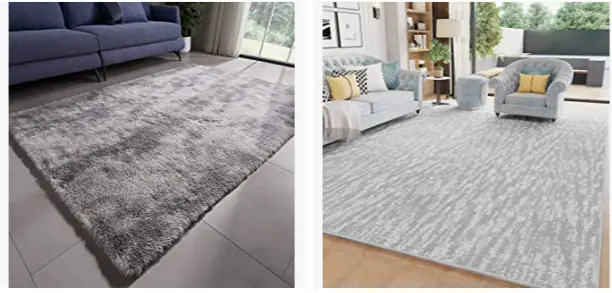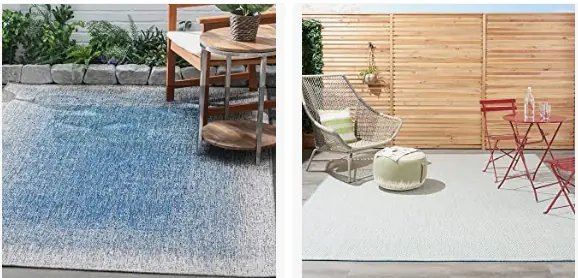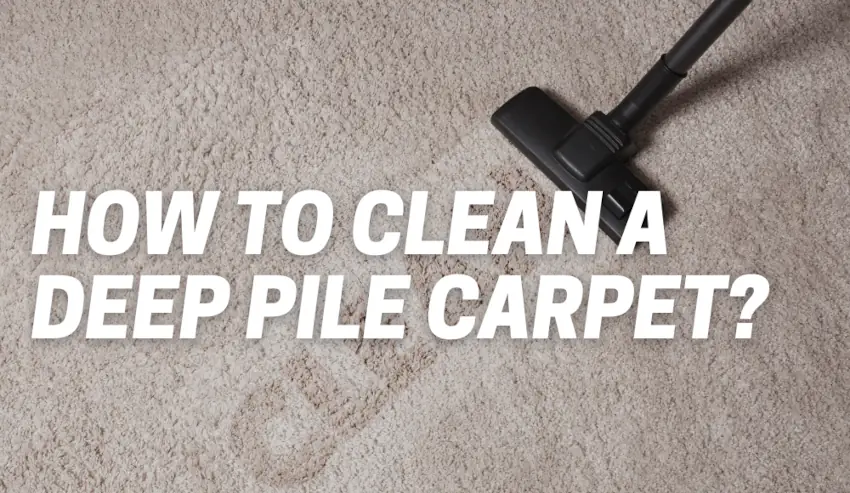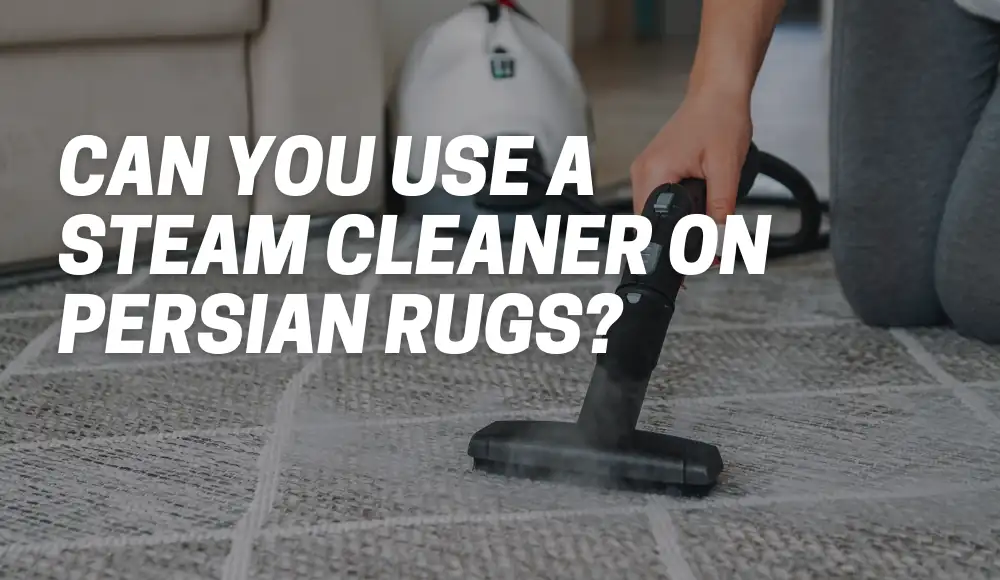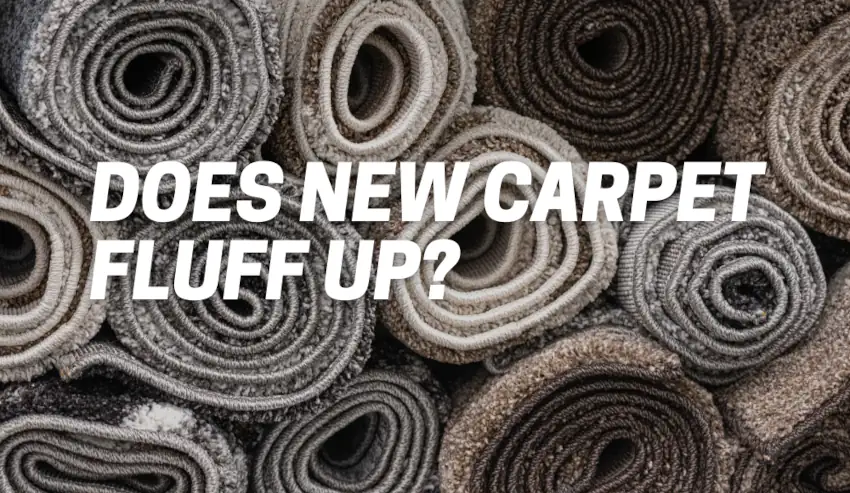Last updated on September 12th, 2023 at 12:23 am
If you’re in the market for a new rug, you may have come across the terms “polyester” and “polypropylene.” These are two popular materials used in rug manufacturing, each with its own set of characteristics and benefits. In this article, we’ll explore the key polyester carpet vs polypropylene differences between both types of rugs, helping you make an informed decision for your home decor needs.
Which is Stronger: Polypropylene or Polyester?
When it comes to strength, polyester and polypropylene rugs have different properties.
Polypropylene is generally known for its durability and resistance to wear and tear. This synthetic material is highly resilient, making it an excellent choice for high-traffic areas such as hallways and living rooms. It can withstand heavy footfall and maintain its shape and color for an extended period.
On the other hand, polyester rugs are not as strong as polypropylene ones. While polyester fibers are soft and luxurious, they are more susceptible to flattening and showing signs of wear over time. Polyester rugs are best suited for areas with lower foot traffic, such as bedrooms or home offices, where comfort and style take precedence over heavy-duty durability.
Is Polypropylene Carpet Better Than Polyester?
Determining which carpet material is better depends on your specific needs and preferences.
If durability and longevity are your top priorities, polypropylene would be the preferred choice. However, if you’re looking for a softer and more luxurious feel, polyester rugs can add a touch of comfort and elegance to your space.
Polypropylene is also a popular choice for outdoor rugs due to its resistance to moisture and fading. It can withstand exposure to sunlight and weather conditions without losing its vibrant colors or structural integrity. Polyester rugs, on the other hand, are more prone to fading and may not be the best option for prolonged outdoor use.
What are the disadvantages of polypropylene carpet?
Polypropylene carpet, also known as olefin carpet, has several disadvantages compared to other types of carpet materials.
Here are some of the key disadvantages:
- Poor resistance to heat: Polypropylene carpet has a relatively low melting point compared to other carpet materials. It can be damaged by high heat sources such as hot objects, burning cigarettes, or friction caused by dragging heavy furniture. This can result in permanent damage to the carpet fibers.
- Susceptible to oil-based stains: Polypropylene fibers have a high affinity for oil-based stains, making them more challenging to remove compared to other types of carpet. This can include stains from food grease, oil spills, or certain household products. Prompt and thorough cleaning is necessary to prevent stains from setting in.
- Prone to matting and crushing: Polypropylene carpet tends to be less resilient than other carpet materials, meaning it may not bounce back to its original shape as easily. Over time, the carpet fibers can become matted and crushed, especially in high-traffic areas. This can result in a worn-out and flattened appearance.
- Limited color options: Polypropylene fibers have a lower dye acceptance compared to other materials, such as nylon or wool. This limitation can restrict the range of vibrant and complex color choices available in polypropylene carpets.
- Poor resistance to sunlight and fading: Polypropylene carpet is not as resistant to UV radiation as some other materials. Prolonged exposure to sunlight can cause the colors to fade and the fibers to deteriorate, leading to a dull and worn-out appearance over time.
- Static buildup: Polypropylene fibers have a tendency to generate static electricity, especially in dry environments. This can result in unpleasant shocks or attraction of dust and debris, requiring additional measures like antistatic treatments or humidifiers.
- Less softness and comfort: Compared to materials like nylon or wool, polypropylene carpet fibers are generally less soft and luxurious underfoot. They can feel coarse and less comfortable, particularly in areas where you spend a significant amount of time, such as bedrooms or living rooms.
Despite these disadvantages, polypropylene carpet has its own advantages, such as affordability, resistance to moisture and mildew, and easy maintenance.
It can be a suitable choice for certain applications, but it’s essential to consider its limitations and select the right carpet material based on your specific needs and preferences.
Where Polypropylene Carpet Shines
Polypropylene carpets are commonly found in commercial buildings such as offices due to their durability and affordability.
Is polypropylene a good carpet fiber?
However, it’s also becoming increasingly popular in residential settings due to its practicality and stain-resistant properties. You’ll often find polypropylene carpets used in basements or playrooms where spills and stains are more likely to occur.
Its moisture resistance means that it’s suitable for use in damp areas such as bathrooms or laundry rooms too.
Overall, if you’re looking for an affordable carpet option that can handle daily wear and tear while still looking great year after year, then polypropylene might be just what you need!
Polyester Rugs: Pros and Cons
Let’s delve deeper into the pros and cons of polyester rugs to better understand their unique characteristics.
Pros:
- Softness and Comfort: Polyester fibers have a soft, plush feel that adds a cozy touch to any room.
- Stain Resistance: Polyester is naturally stain-resistant, making it easier to clean up spills and maintain the rug’s appearance.
- Vibrant Colors: Polyester can hold dye exceptionally well, resulting in vivid and long-lasting colors.
- Affordability: Polyester rugs are often more budget-friendly compared to other materials, making them a popular choice for cost-conscious buyers.
- Hypoallergenic: Polyester fibers are less likely to trigger allergies, making them suitable for individuals with sensitivities.
Cons:
- Durability: Polyester rugs are less durable compared to other materials and may show signs of wear and tear over time.
- Flattening: The fibers in polyester rugs tend to flatten and lose their initial texture with heavy use.
- Static Build-up: Polyester fibers can generate static electricity, which can be an inconvenience in dry environments.
- Fading: Polyester rugs may fade when exposed to prolonged sunlight, limiting their suitability for areas with excessive sunlight.
Polyester Carpet vs Polypropylene Reddit Insights
To gain some real-life perspective on the polyester and polypropylene or any other type of rugs debate, let’s turn to the Reddit community and see what users have to say.
| Main Points |
|---|
| Prefers wool rugs with 90% wool and 10% nylon for color fastness and moth resistance. |
| Suggests looking for washable rugs with low pile, especially for pet owners. |
| Suggests carpet tiles for stain resistance and easy cleaning. Recommends Antron carpet for the best stain resistance and bleach cleanability. |
| Mentions concerns about synthetic fibers containing high amounts of PFAS and BPAS, cancer-causing chemicals. Suggests avoiding synthetics and opting for organic cotton or wool. |
| Recommends Ruggable for its washability and suitability for pet owners and children. |
| Highlights the importance of considering style, use case (e.g., pets), and long-term costs when choosing rugs. |
| Aspect | Polyester Carpet | Polypropylene Carpet |
|---|---|---|
| Issues with cheap rugs | Can leave marks, stick on floor. | No issues if bought from a known |
| smell terrible | brand | |
| Recommendations for rug type | Machine-made polypropylene rugs | Machine-made polypropylene rugs |
| Wool as an alternative | Not recommended for a bachelor | Not mentioned |
| Shedding of wool rugs | Yes, shedding is common | Not mentioned |
| Recommended rug quality | High-quality wool rugs | Extra dense polypropylene rugs |
| Maintenance | Super easy to maintain | Super easy to maintain |
| Rug feeling | No dirts will go underneath. | Thick rug feeling |
| won’t stink | ||
| Durability | Good for longer periods of time, | Won’t go flat |
| won’t go flat | ||
| Rug pad recommendation | Not mentioned | Recommended for thin, lightweight, |
While these comments provide valuable insights, it’s important to note that individual experiences may vary. Factors such as rug construction, thickness, and maintenance routines can all impact the performance of polyester and polypropylene rugs.
Polypropylene vs Polyester Outdoor Rugs
When it comes to outdoor rugs, both polyester and polypropylene have their advantages and considerations.
Polypropylene rugs are a popular choice for outdoor use due to their ability to withstand exposure to the elements. They are resistant to moisture, mold, and fading caused by sunlight, making them ideal for patio or deck areas.
Additionally, polypropylene rugs are relatively easy to clean and maintain, making them suitable for high-traffic outdoor spaces.
Polyester outdoor rugs, while not as durable as polypropylene, can still be a viable option depending on your specific requirements. They offer a soft and comfortable feel underfoot, making outdoor gatherings more enjoyable.
However, it’s important to protect polyester rugs from excessive sunlight exposure to minimize fading and maintain their vibrant colors.
Are Polyester Rugs Safe for Babies?
When it comes to choosing rugs for a baby’s nursery or play area, safety is a top priority.
Polyester rugs can be a suitable choice due to their hypoallergenic properties. They are less likely to trigger allergies or cause skin irritations, making them safer for babies with sensitive skin.
To ensure optimal safety, consider purchasing polyester rugs that are certified free from harmful substances such as formaldehyde or other volatile organic compounds (VOCs). Look for certifications such as Oeko-Tex Standard 100, which guarantees the absence of hazardous chemicals.
| Aspect | Polyester Rugs |
|---|---|
| Impact of plastic exposure | Babies are growing up in a world drenched in plastic, and exposure cannot be completely avoided |
| Research on long-term impact | Long-term research on the impact of synthetic materials and microplastics on babies is limited |
| Flame retardants | New furniture, mattresses, carpets, and home textiles are often coated with flame retardants with potential health concerns |
| Organic materials | Organic or non-toxic materials can still contain flame retardants |
| Purchasing second hand | Buying second-hand or using existing items is recommended as the coating wears off with time |
| Synthetic fabrics/materials | Some individuals avoid synthetic fabrics/materials and PFAS for safety and environmental reasons |
| PFAS exposure | PFAS chemicals are found in various products, and avoiding stain/water-resistant materials is recommended |
| OEKO-TEX certification | OEKO-TEX certification tests for only a few PFAS chemicals, and it’s challenging to determine which products are free from PFAS |
FAQs:
How to Clean Polypropylene and Polyester Rugs?
Cleaning polypropylene and polyester rugs is relatively straightforward.
For routine maintenance, vacuum regularly to remove dirt and debris. In case of spills, blot the area with a clean cloth or paper towel to absorb as much liquid as possible. For deeper cleaning, you can use a mild detergent and warm water to spot-clean the affected area.
However, always check the manufacturer’s instructions and recommendations for specific cleaning guidelines.
What is the Best Type of Carpet Fiber?
The best type of carpet fiber depends on your individual needs and priorities. Wool is a popular choice due to its natural softness, durability, and stain resistance.
Nylon is another widely used option known for its resilience and ability to withstand heavy foot traffic.
Polyester and polypropylene offer affordability and a range of style options. Ultimately, the best choice depends on factors such as budget, desired aesthetic, and the level of durability required.
What Carpet Material is Healthiest?
When it comes to health considerations, wool is often regarded as the healthiest carpet material. It is a natural and sustainable fiber that is hypoallergenic and resistant to mold, mildew, and dust mites.
Additionally, wool has the ability to improve indoor air quality by trapping allergens and particulate matter.
However, it’s essential to keep in mind that regular cleaning and maintenance are crucial for any carpet material to maintain a healthy indoor environment.
Conclusion
When deciding between polyester and polypropylene rugs, it’s important to consider factors such as durability, softness, color retention, and specific usage requirements. Polypropylene rugs are known for their strength and resilience, making them ideal for high-traffic areas and outdoor use.
Polyester rugs, on the other hand, offer softness, vibrant colors, and budget-friendly options. By understanding the unique characteristics of each material, you can make an informed choice that suits your style, budget, and lifestyle needs.
